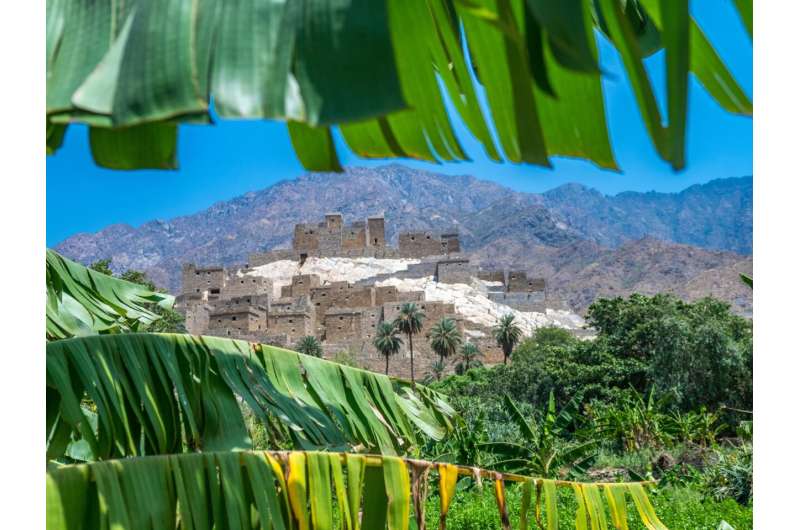This article has been reviewed according to Science X's editorial process and policies. Editors have highlighted the following attributes while ensuring the content's credibility:
fact-checked
trusted source
proofread
Measuring the impact of desert greening

Long-term satellite data shows a significant cooling effect of vegetation on land surface temperature. The searing heat of the Arabian Peninsula translates to a population vulnerable to heat stress. As temperatures continue to rise, effective strategies are urgently needed to mitigate and adapt to the impacts of climate change in the region.
A promising approach is the greening of dry areas, which has been shown to modify the surface climate in several regions. Monitoring the impact of vegetation on surface temperature is important, as KAUST climatologist Matteo Zampieri explains.
"As vegetation absorbs more solar energy compared to the desert, it reduces the reflectivity (albedo) of the land surface. This in turn increases the temperature of the land surface in water limited areas. So, the balance between increased evapotranspiration and reduced albedo compared to the bare soil determines the outcome of greening efforts," he says.
"The outcomes may vary, based on the availability of water for plants as well as specific physiological processes of drought adapted plant species. While some instances of desert greening may lead to surface cooling, others can actually result in surface warming," Zampieri warns.
To investigate the effects of managed vegetation, the researchers used satellite data to compare the surface temperature differences between planted areas and bare soil at five sites representing Saudi Arabia's main agricultural regions. They also used a site at Al-Qirw with a mix of vegetation maintained by pivot irrigation. They analyzed the data at Al-Qirw, where temperature differences between vegetated and bare soil are not influenced by differences in elevation.
The satellite data were used to generate statistics on a daily basis, which showed the changes in average temperature over green areas and the effect of vegetation on temperature variability.
A normalized difference vegetation index (NDVI) was used as an indicator of the presence and vigor of vegetation and the land surface temperature (LST) during day and night was used to estimate the effects of vegetation on the surface climate.
At Al-Qirw, the annual mean LST differed considerably between the planted areas and bare soil. Between 2010 and 2017, the daytime LST was about 4°C cooler inside the area covered by vegetation compared to the surrounding bare soil.
On hotter days, vegetation provides an extra cooling effect. These results corresponded with an increase in the NDVI in the vegetated area. After 2017, the NDVI suddenly decreased and the cooling effect in Al-Qirw vanished, possibly related to water management sustainability.
Leader of the research team KAUST's Ibrahim Hoteit, says the study published in Ecological Indicators supports other evidence that establishing vegetation and effective water management practices mitigates high temperatures in arid regions.
"Our study shows that managed vegetation plays a crucial role in mitigating the impacts of climate change, especially heat waves," he says.
"However, it also highlights the importance of sustainability factors because the collapse of vegetation can diminish the cooling effect and accelerate local warming trends," he warns.
More information: M. Zampieri et al, Managing vegetation for stronger cooling efficiency during hot days in the Arabian Peninsula, Ecological Indicators (2023). DOI: 10.1016/j.ecolind.2023.110789





















